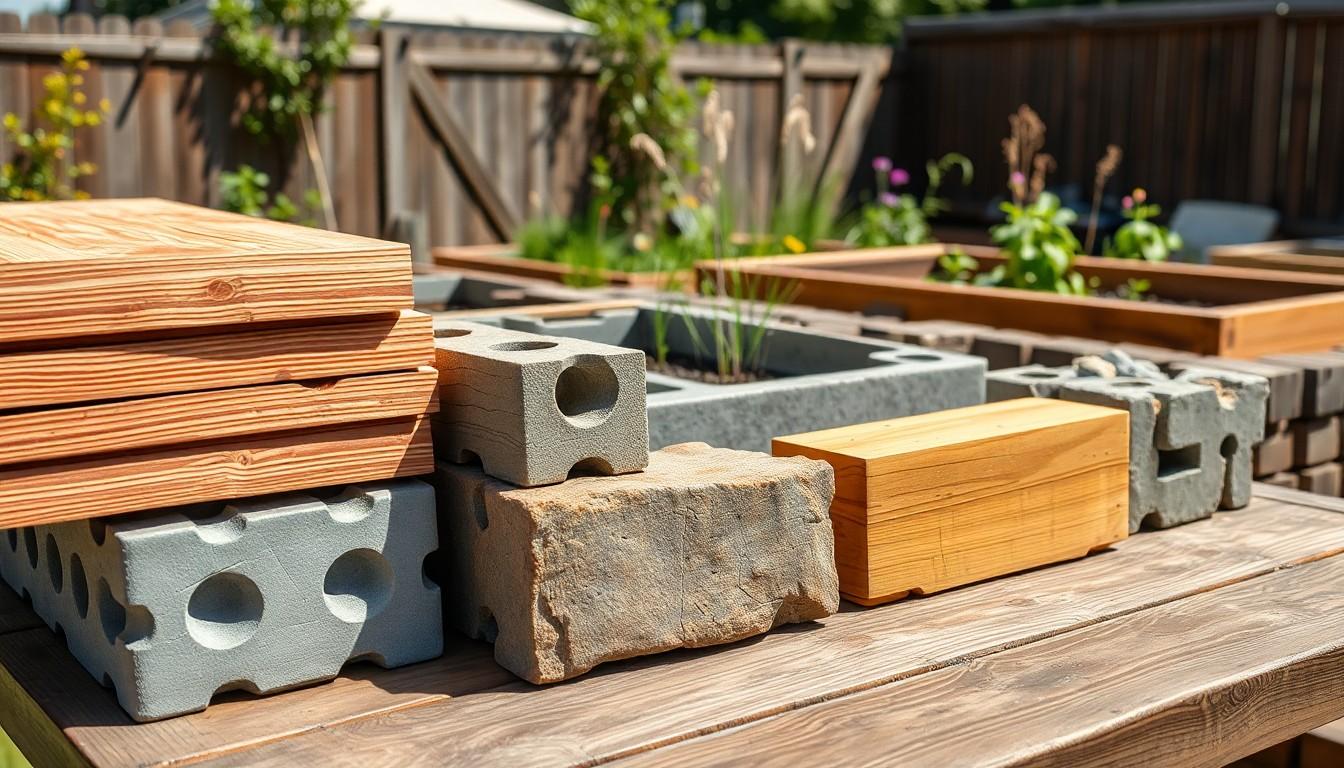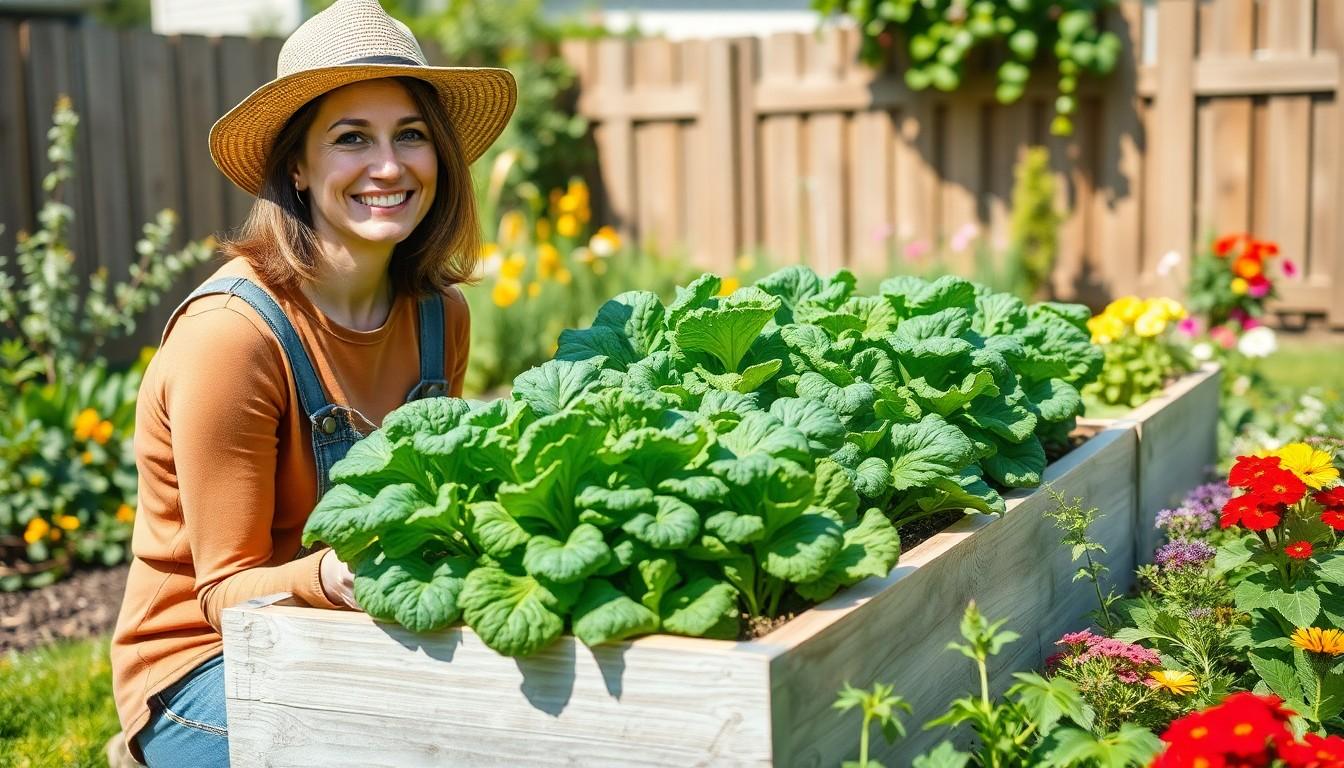Growing your own veggies sounds great, right? But let’s face it, digging up the backyard can feel like a scene from a horror movie. Enter raised garden beds—your ticket to a thriving garden without the backache. They’re not just for the green-thumbed elite; anyone can transform their outdoor space into a lush paradise with a few smart tips.
Raised Garden Beds Tips
Raised garden beds offer numerous advantages that enhance the gardening experience. They improve overall planting efficiency and simplify care for various plants.
Improved Drainage
Improved drainage is one major benefit of raised garden beds. Elevated structures prevent water pooling, which can harm roots. Their design allows excess water to drain quickly, reducing the risk of root rot. Shallow-rooted plants thrive better due to this efficient drainage system. Consistently dry soil encourages healthier growth, leading to robust yields. Gardeners can even control moisture levels, ensuring optimal growing conditions.
Better Soil Quality
Better soil quality significantly enhances plant growth in raised garden beds. They allow for the creation of a customized soil mix tailored to specific plant needs. This blend can contain organic materials, nutrients, and compost that enhance fertility. Soil in a raised bed remains loose, promoting healthy root development by improving aeration. The absence of compacted ground also prevents weeds from encroaching, ensuring that plants have access to all nutrients. With careful management, soil in raised beds stays rich and productive longer, leading to continuous gardening success.
Ideal Materials For Construction

Choosing the right materials for raised garden beds enhances durability and plant health. Selecting appropriate options is crucial for successful gardening.
Wood Options
Cedar and redwood are excellent choices due to their natural resistance to decay. Untreated pine offers affordability but may not last as long. Pressure-treated wood requires caution as it may contain chemicals harmful to plants. Combining boards for increased height can improve drainage. Designing beds with wood often provides an aesthetically pleasing look in the garden.
Alternative Materials
Recycled plastic lumber withstands moisture without rotting. Concrete blocks allow flexible configurations and add stability. Stone options bring a rustic charm while ensuring longevity. Metal, such as corrugated steel, provides durability and can maintain warmth for roots. Utilizing these alternatives can expand design possibilities while still achieving the benefits of raised beds.
Planning Your Raised Garden Bed
Planning a raised garden bed involves critical decisions that can impact plant growth and maintenance. Taking the time to consider location and design will create a flourishing garden space.
Choosing The Right Location
Selecting an ideal location influences plant health. Sunlight exposure plays a vital role; most vegetables require at least six hours of sunlight daily. Avoid areas with heavy shade from trees or buildings. Drainage should also factor into the decision; raised beds need proper drainage to prevent waterlogging. Assessing soil quality aids in ensuring sufficient nutrients for plants. Windy areas may damage delicate plants, so it’s beneficial to choose a sheltered spot. Proximity to a water source simplifies irrigation, making it easier to maintain adequate moisture levels.
Design Layout Considerations
Designing the layout contributes to the efficiency and functionality of the garden bed. Consider dimensions; a width of 4 feet allows easy access from both sides. The height can vary; higher beds facilitate gardening for those with mobility challenges. Utilizing a rectangular shape maximizes space, accommodating more plants. Including pathways between beds aids in maintenance and ensures easy access for planting and harvesting. Planning for companion planting enhances plant relationships, promoting growth and pest control. Incorporating vertical gardening techniques can optimize space, allowing vines to flourish without taking up ground area.
Soil Selection And Preparation
Selecting the right soil is essential for the success of raised garden beds. Quality soil provides necessary nutrients and ensures healthy plant growth.
Best Soil Mixes
Use a combination of compost, topsoil, and peat moss for an optimal soil mix. Blending these materials creates a well-draining medium that retains moisture. Aim for a ratio of 1 part compost, 1 part topsoil, and 1 part peat moss. This mix offers essential nutrients for various plants, including vegetables and herbs. Incorporating vermiculite or perlite can improve aeration and drainage, further enhancing root growth. Many gardeners find that this mix supports both short-term crops and longer-growing varieties.
Fertilization Tips
Fertilization plays a crucial role in maintaining soil health. Apply organic fertilizers such as compost or well-aged manure at planting time. Utilize a balanced fertilizer to provide a comprehensive nutrient profile throughout the growing season. Regular soil testing helps determine nutrient levels, allowing for timely adjustments. Top-dress with organic matter like compost every few months to enhance nutrient content further. Liquid fertilizers can also offer immediate boosts to plants in active growth phases. Frequent monitoring ensures plants receive adequate nutrition for robust yields.
Plant Selection And Arrangement
Selecting the right plants and arranging them thoughtfully maximizes the effectiveness of raised garden beds. Taking companion planting and seasonal strategies into consideration enhances growth and yields.
Companion Planting
Companion planting fosters beneficial relationships between plants. For instance, pairing basil with tomatoes improves flavors and deters pests. Marigolds serve as natural repellents to aphids and nematodes when planted alongside vegetables. Additionally, planting carrots with onions prevents root fly invasions and boosts overall plant health. Creating diverse plantings enhances biodiversity, reduces the spread of diseases, and ultimately results in a more productive garden.
Seasonal Planting Strategies
Adapting planting strategies to seasons optimizes harvests. Spring offers opportunities for sowing cool-season crops like spinach and lettuce. Summer favors warm-season crops such as peppers and cucumbers, thriving in the heat. Transitioning to fall crops, including kale and Brussels sprouts, ensures continued production as temperatures cool. Rotating crops each season prevents soil depletion and disrupts pest cycles, fostering a healthier garden ecosystem. By timing plantings carefully, gardeners can enjoy fresh produce throughout the year.
Maintenance Tips For Raised Garden Beds
Caring for raised garden beds ensures flourishing plants and abundant yields. Regular attention to watering and pest management plays a vital role in successful gardening.
Watering Techniques
Watering raised garden beds requires a different approach than traditional gardens. Utilize a soaker hose or drip irrigation system to deliver moisture directly to the soil, conserving water and reducing evaporation. Aim to provide about 1 inch of water per week, adjusting based on rainfall and plant requirements. Consider testing soil moisture with a finger or moisture meter to determine when plants need watering. Matting or ground cover can help retain soil moisture during dry spells. By assessing conditions regularly, efficient watering promotes optimal plant growth.
Pest Management
Managing pests in raised garden beds involves several preventive measures. Start by encouraging beneficial insects, such as ladybugs and lacewings, which help control pest populations naturally. Introduce barriers like row covers to protect seedlings from pests while allowing sunlight and rain in. Regularly inspect plants for signs of infestations and remove any affected leaves or plants immediately. Use organic options like neem oil or insecticidal soap when necessary. Rotating crops each season can disrupt pest life cycles, contributing to a healthy garden ecosystem.
World of Gardening Possibilities
Embracing raised garden beds opens up a world of gardening possibilities. They make gardening more accessible while enhancing plant health and productivity. By selecting the right materials and planning strategically, anyone can create an inviting and functional garden space.
With proper soil preparation and thoughtful plant selection, gardeners can enjoy the fruits of their labor throughout the growing season. Regular maintenance ensures that raised beds remain productive and vibrant. Whether a beginner or an experienced gardener, these tips can help cultivate a thriving garden that brings joy and nourishment.

